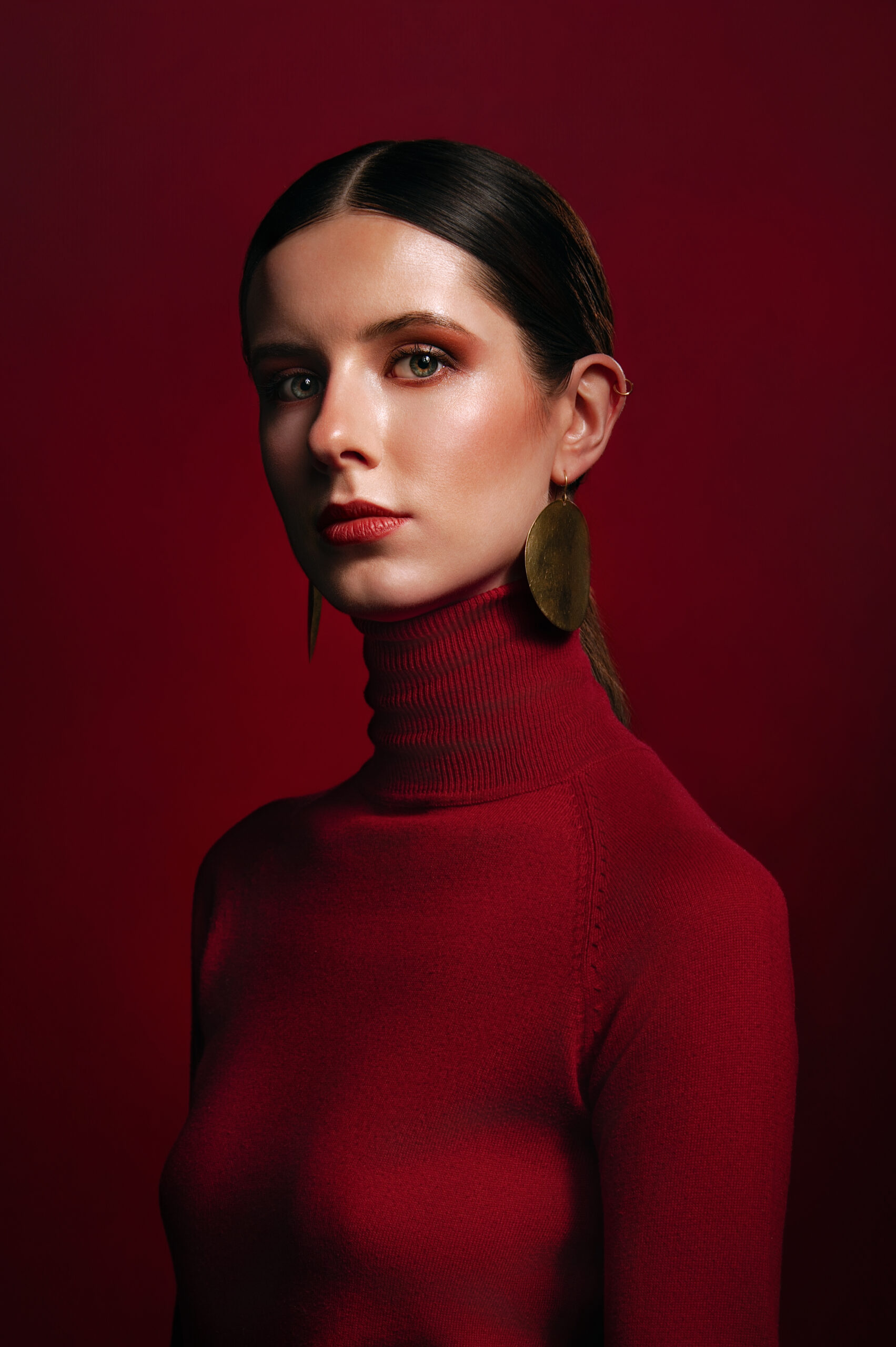If you look closely at the beam pattern in Example 1, you’ll see something you would never notice while working with it. It is not one light source, it is two.
In Example 2, you can see the same pattern with increased contrast.
In the center, there is a tight, focused beam that behaves like a hard source. Around it, a softer, scattered halo that wraps and fills. That combination is what gives the beauty dish its unique look: crisp edges, deep shadow control, and smooth falloff all at once.
The bright core in the middle is formed by light that first strikes the central deflector disc and is then reflected cleanly from the parabolic surface toward the subject. These rays follow the shortest and most direct optical path, remaining largely specular and concentrated along the central axis. Because they have undergone only one major redirection, they behave like a small, hard source that creates crisp edges and strong definition.
The softer outer glow comes from light that takes longer and more complex paths, bouncing multiple times within the dish cavity or reflecting from the edges at steeper angles. Each additional interaction scatters the rays slightly, broadening the apparent size of the source and reducing contrast. This scattered component wraps around the subject, softening the shadow transitions and adding subtle fill.
Together, these two behaviors, the specular core and the diffuse halo, form the beauty dish’s signature character: contrast with forgiveness.
If it were possible to isolate just the center beam, it would behave like a small reflector or even a snoot. If you could isolate only the outer spill, it would behave like a large, diffuse source, as shown in Example 3. The beauty dish merges both behaviors into a single pattern.
(Note: There are two main types of beauty dish, silver and white, and a range of accessories such as grids and diffusion socks. In this post, I am referring specifically to a silver beauty dish without accessories.)
How to Use It
The best way to position a beauty dish for portraits is just above the subject, angled down at roughly 45 degrees. I usually place it so the lower edge is barely out of frame. This gives me beautiful half-moon catchlights in the eyes, but the exact angle depends on where you want the shadows to fall.
Set the modeling light to 100%. This allows you to see exactly how the shadows fall as you adjust height and angle. You are composing for shadow placement at first, not for light coverage. The strong modeling light also contracts the model’s pupils, revealing more iris and giving the eyes more life in the final image.
The sweet spot, the optimal distance, sits roughly one dish diameter away from your subject (see Example 3). That is not a rule, just a reliable starting point. At that distance, the dish’s apparent size and the balance between specular and scattered rays are in harmony.
Closer, within the sweet spot, the larger apparent size of the dish produces a soft, broad glow. Farther, the dish’s apparent size shrinks, the hard core dominates, and the overall light becomes more contrasty.
Although rules are meant to be broken, avoid placing the dish so close that the face falls within the point of convergence, where the triangular beam narrows to its tip. Any distance beyond that point is usable, and within a window of about 5 to 10 centimeters, each small adjustment produces a distinct light quality.
Now that you have seen how the light behaves in the example images, keep them as reference. For many photographers, this is the missing puzzle piece that makes the beauty dish predictable. You will never be able to unsee that triangular beam again.
Bring in a model and make test shots. Compose for shadow shape at first, not brightness. Try different distances and power levels. Experiment with slightly underexposed, correctly exposed, and overexposed frames. Adjusting the highlights slider down in your photo editor will reduce diffuse light, making specular highlights more pronounced, and vice versa. I find my camera gives me better control over these nuances when I slightly underexpose.
A beauty dish is not a soft light, and it is not a hard light. It is both, two light behaviors in one, defined by geometry and physics, not magic.



